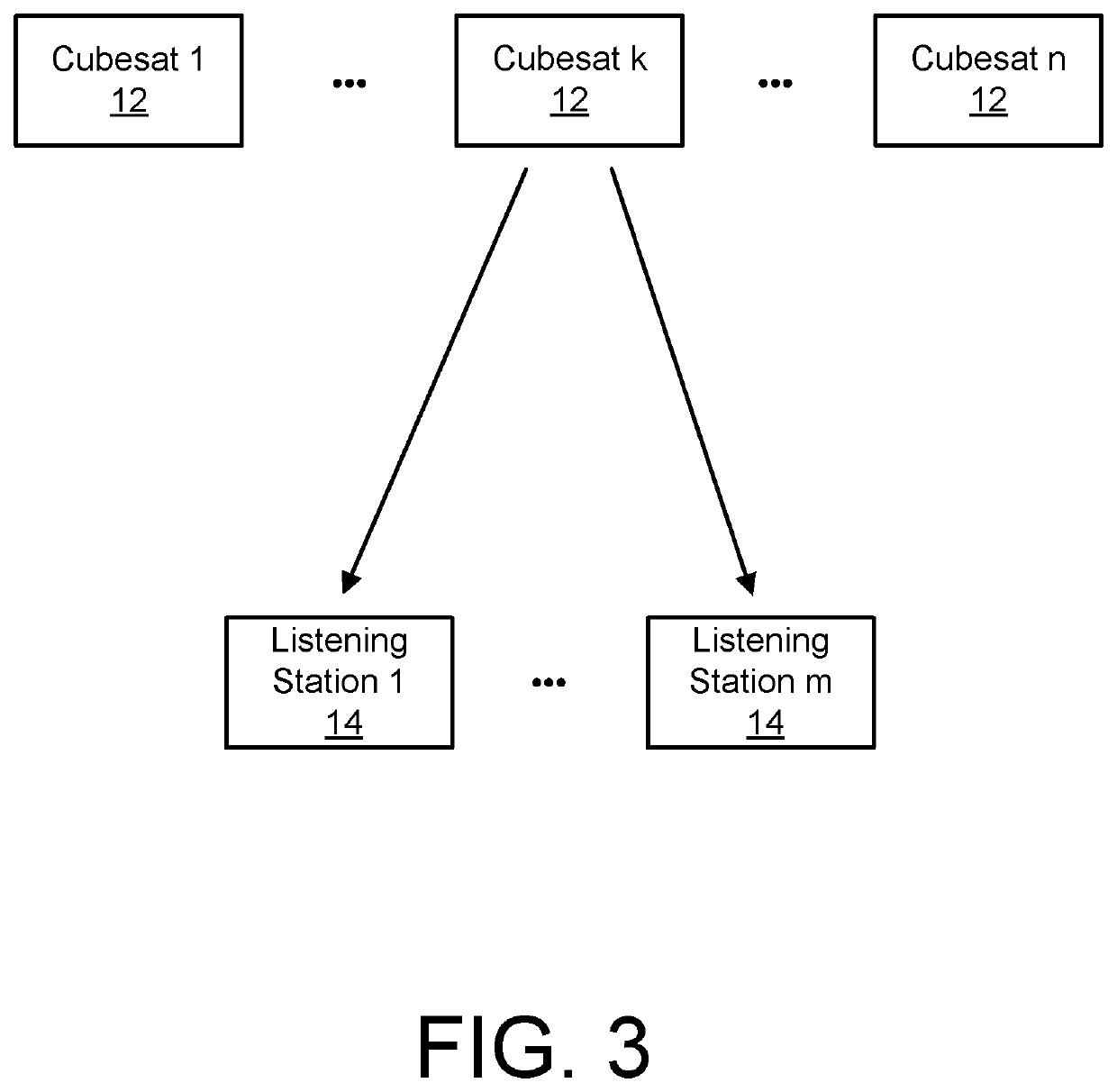Secure, Energy-Efficient Public Blockchain
a public blockchain, energy-efficient technology, applied in the field of maintenance of the integrity of the blockchain, can solve the problems of frankly ecological irresponsibility and higher costs for users
- Summary
- Abstract
- Description
- Claims
- Application Information
AI Technical Summary
Benefits of technology
Problems solved by technology
Method used
Image
Examples
Embodiment Construction
[0039]Referring now to the drawings wherein like reference numerals refer to similar or identical parts throughout the several views, and more specifically to FIG. 1 thereof, there is shown system 10 to determine an order among blocks in a blockchain. The system 10 comprises at least one satellite 12. The system 10 comprises a communications infrastructure 15 in communication with the one satellite 12. The system 10 comprises sending stations 16 in communication with the communications infrastructure 15. The system 10 comprises listening stations 14 in communication with the communications infrastructure 15; wherein (i) a sending station 16 of the plurality of sending stations 16 assembles a block comprising of at least one transaction and a digest of all previous blocks and assembles a representation of the block, (ii) the sending station 16 sends the representation of the block to the one satellite 12, (iii) the one satellite 12 modifies said representation by an indication of an ...
PUM
 Login to View More
Login to View More Abstract
Description
Claims
Application Information
 Login to View More
Login to View More - R&D
- Intellectual Property
- Life Sciences
- Materials
- Tech Scout
- Unparalleled Data Quality
- Higher Quality Content
- 60% Fewer Hallucinations
Browse by: Latest US Patents, China's latest patents, Technical Efficacy Thesaurus, Application Domain, Technology Topic, Popular Technical Reports.
© 2025 PatSnap. All rights reserved.Legal|Privacy policy|Modern Slavery Act Transparency Statement|Sitemap|About US| Contact US: help@patsnap.com



